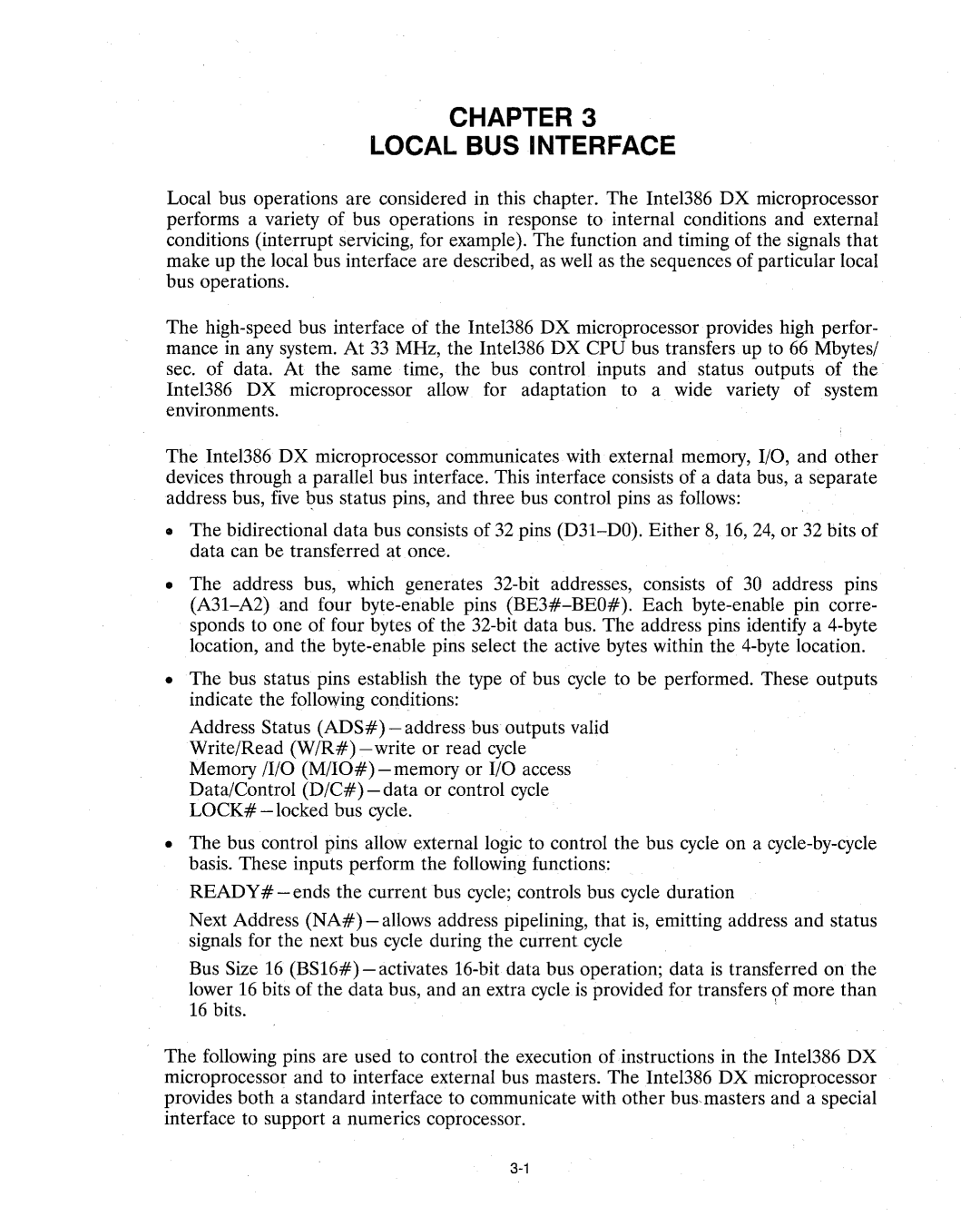
CHAPTER 3
LOCAL BUS INTERFACE
Local bus operations are considered in this chapter. The Inte1386 DX microprocessor performs a variety of bus operations in response to internal conditions and external conditions (interrupt servicing, for example). The function and timing of the signals that make up the local bus interface are described, as well as the sequences of particular local bus operations.
The
The Intel386 DX microprocessor communicates with external memory, I/O, and other devices through a parallel bus interface. This interface consists of a data bus, a separate address bus, five bus status pins, and three bus control pins as follows:
•The bidirectional data bus consists of 32 pins
•The address bus, which generates
•The bus status pins establish the type of bus cycle to be performed. These outputs indicate the following conditions:
Address Status
•The bus control pins allow external logic to control the bus cycle on a
READY# - ends the current bus cycle; controls bus cycle duration
Next Address (NA#) - allows address pipelining, that is, emitting address and status signals for the next bus cycle during the current cycle
Bus Size 16
lower 16 bits of the data bus, and an extra cycle is provided for transfers of more than
16 bits. | . |
The following pins are used to control the execution of.instructions in the Intel386 DX microprocessor and to interface external bus masters. The Intel386 DX microprocessor provides both a standard interface to communicate with other bus masters and a special interface to support a numerics coprocessor.
